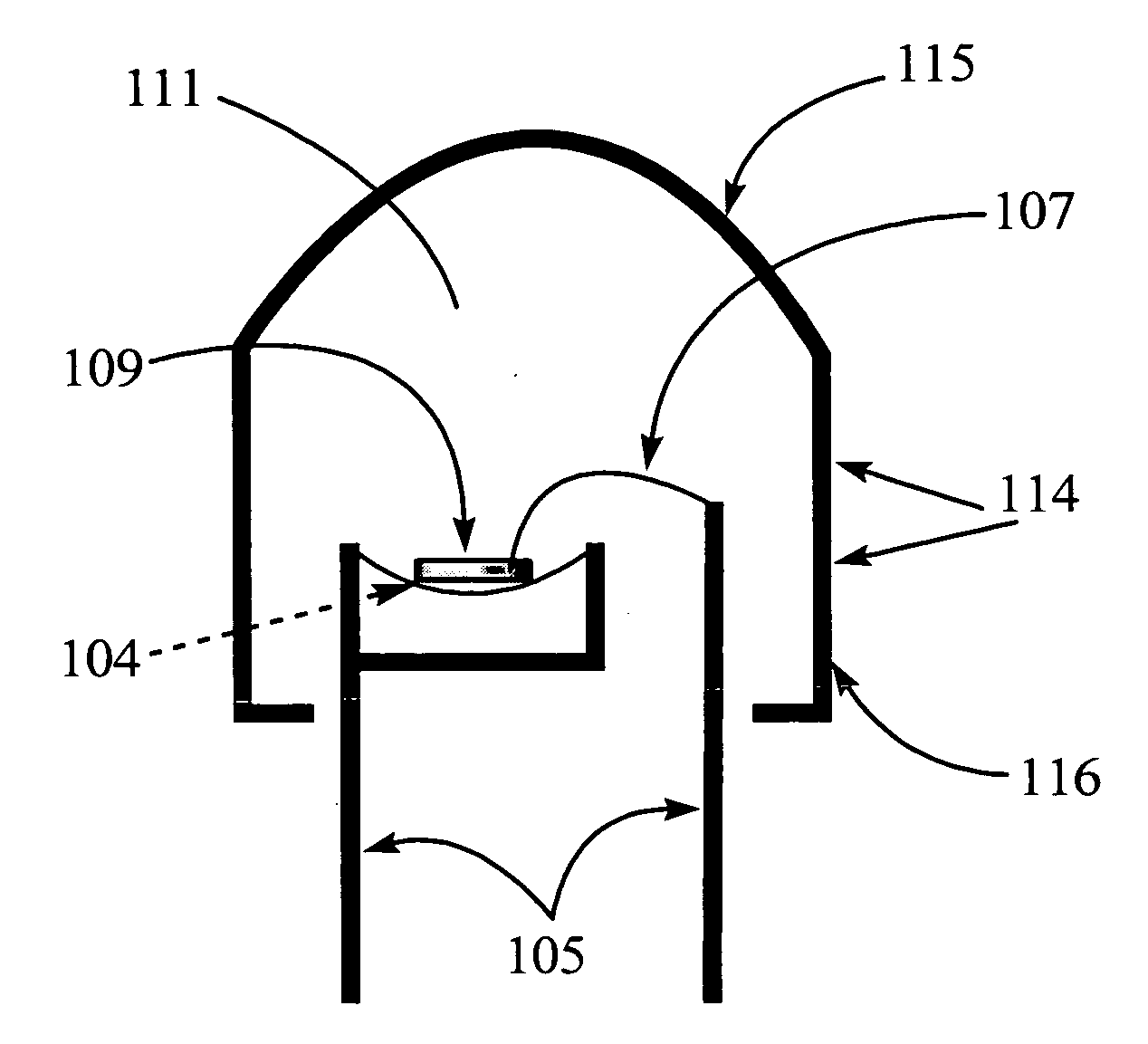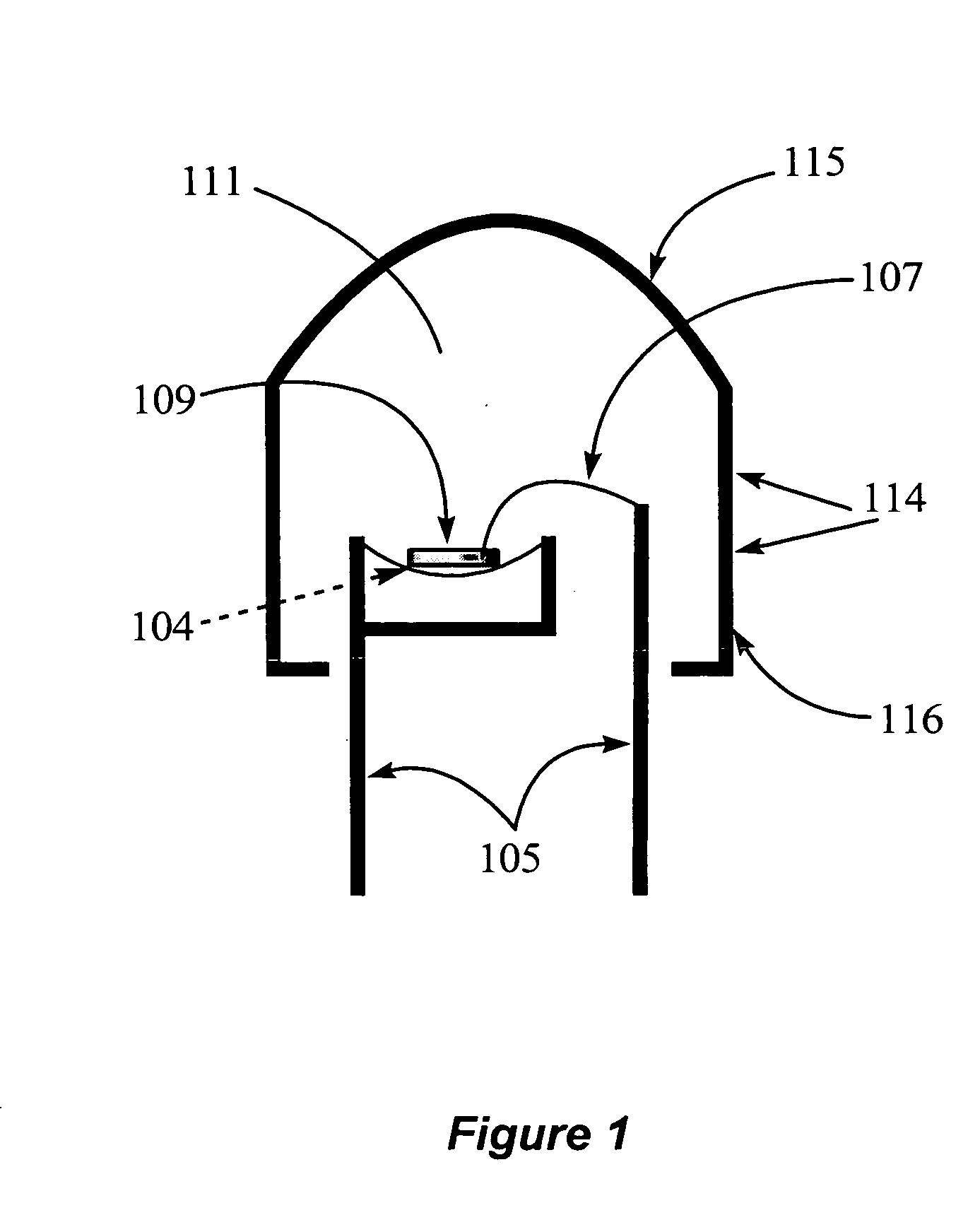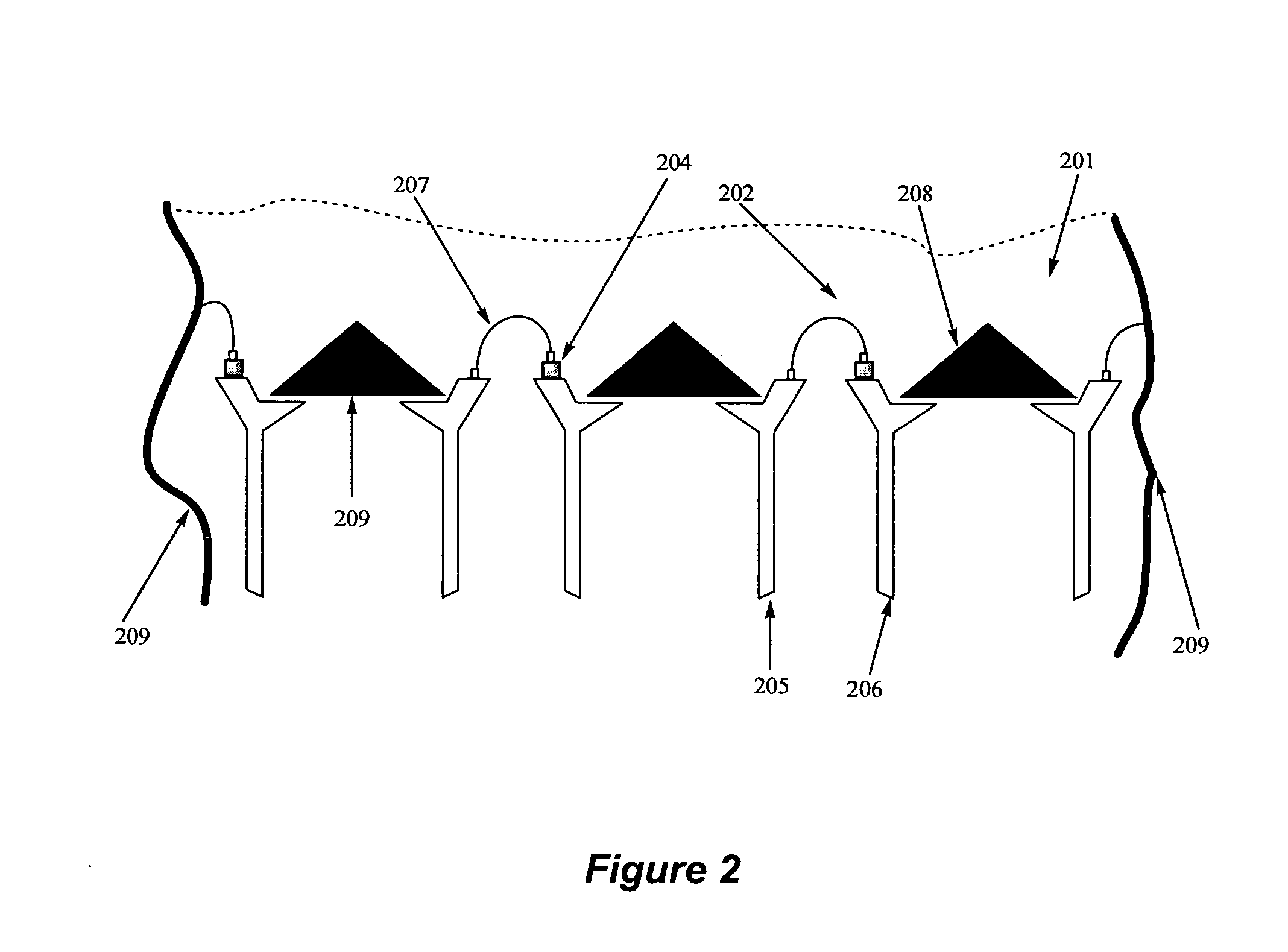Optoelectronic device
a technology of optoelectronic devices and optoelectronic components, which is applied in the direction of thermoelectric devices, lasers, semiconductor lasers, etc., can solve the problems of low thermal requirements, low flux intensities of early 5 mm led devices, and low toughness of silicone materials that do not have the toughness required for long-term durability in advanced lighting applications
- Summary
- Abstract
- Description
- Claims
- Application Information
AI Technical Summary
Problems solved by technology
Method used
Image
Examples
example 2
[0086]Typical Curing Schedules:
[0087]B-Stage: 60° C. for 48 hours
[0088]C-Stage: 100° for 2 hours→125° C. for 2 hours→150° C. for 4 hours
TABLE 1General FormulationsMolar RatioMolar RatioFormulaTGIC:HYDEEpoxide rings:HHPAPII1:2 1:0.550.1 (wt) %II1:21:10.1 (wt) %III1:2 1:1.50.1 (wt) %IV1:41:10.1 (wt) %V1:8 1:0.550.1 (wt) %VI1:81:10.1 (wt) %VII1:81:10.1 (wt) %
TABLE 2Standard LoadingReagentWt % (Resins & Anhydride)SR 3551Weston 6180.252,6-Di-tert-butyl-4-methylphenol0.15Triphenyl phosphite0.25
[0089]B-Stage samples prepared above could be used in resin transfer molding equipment with subsequent final cure of 150° C. for 3 hours. C-Stage materials were used for all accelerated tests.
example 3
[0090]Extremely stable systems were formed from epoxy materials derived from 1,3-bisglycidyl-5methyl-5′-ethylhydantoin, a low level of cross linker trisgylcidyl-isocyanurate (TGIC) and cycloaliphatic anhydrides catalyzed by imidazole catalysts (THY), as exemplified in Example 2. FIG. 6 shows the effect upon transmission before and after exposure to 406 nm at 187 milliwatts per mm2 while maintaining a temperature of 125° C. upon the THY resin.
[0091]The mechanical properties and processing conditions also make THY an excellent candidate for LED power package assembly. In terms of fracture toughness, THY exceeds the performance of standard aromatic based systems with a toughness on the order of 3 Gigapascals per root meter. THY is also capable of being B-staged and thus resin transfer molded into LED power packages.
[0092]It has been found that epoxy materials based upon 1,3-bis-glycidyl 5-methyl, 5′-ethyl-hydantoin exhibit enhanced thermal and UV stability. The materials are capable of...
example 4
[0093]Eight THY samples were prepared as shown in Table 3. Each sample had a total weight of 20 grams including 0.35 grams SR 355, 0.1 grams triphenyl phosphite, 60 mg 2,6-di-tert-butyl-4-methylphenol, 1 gram 2-phenyl imidazole, and 0.1 g Weston 618 or 616.
TABLE 3Staging Reaction ConditionsMolarRatioMolar RatioSampleTGIC / Epoxy / Reaction#HYDEAnhydrideConditionB-stageAppearance12:11:160° C., 48 hPartialColorless21:11:160° C., 42 hPartialColorless31:21:160° C., 42 hPartialColorless41:31:160° C., 46 hYesColorless51:41:160° C., 46 hYesColorless61:51:160° C., 48 hYesColorless71:61:160° C., 48 hYesColorless81:81:160° C., 48 hYesColorless
[0094]Table 3 indicated that B-stage could be obtained by decreasing the ratio of TGIC to HYDE.
PUM
| Property | Measurement | Unit |
|---|---|---|
| temperatures | aaaaa | aaaaa |
| wavelengths | aaaaa | aaaaa |
| temperatures | aaaaa | aaaaa |
Abstract
Description
Claims
Application Information
 Login to View More
Login to View More - R&D
- Intellectual Property
- Life Sciences
- Materials
- Tech Scout
- Unparalleled Data Quality
- Higher Quality Content
- 60% Fewer Hallucinations
Browse by: Latest US Patents, China's latest patents, Technical Efficacy Thesaurus, Application Domain, Technology Topic, Popular Technical Reports.
© 2025 PatSnap. All rights reserved.Legal|Privacy policy|Modern Slavery Act Transparency Statement|Sitemap|About US| Contact US: help@patsnap.com



